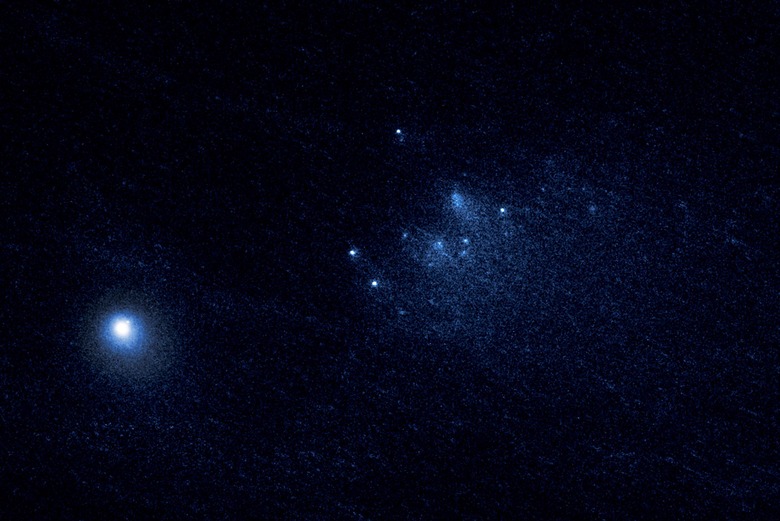Ancient Comet Disintegrates In Deep Blue Hubble Space Photo
Most of NASA's photos are visually stunning but similar in nature: bright stars and planets are mixed with large splashes of saturated colors, dust clouds and debris usually mixed in amidst it all. A new photo the space agency shared this week is very different but no less great — it shows a very deep blue background with bright blue particles mixed in, the entire image covered with what could easily be mistaken for film grain. The photo is calm, relaxing, and a small glimpse at the death of an ancient comet.
The image you see below is part of a series of frames captured by Hubble that, says NASA, are the clearest look at a comet breaking up. This comet, though, is located (or was located) 67 million miles from Earth, making this an exceptionally rare look at something we'd otherwise never have been able to see: an ancient comet dying far, far away in deep space. The comet itself is thought to be about 4.5 billion year old, and it has been named 332P/Ikeya-Murakami, also called Comet 332P.

The series of images — which can be viewed as a short animation here — were taken over the course of three days back in January of this year.
Says NASA, researchers speculate the comet is spinning exceptionally fast, with that spin causing debris to be scattered around it and in a trail that is now about 3,000 miles in length with a width great than the United States. The glowing spots you see in the image are each about the size of a building and they're made from dust and ice.
Thanks to these images, NASA says researchers have gotten their best ever measurements of a large comet like this breaking apart, providing vital data on an event that still largely remains a mystery. The icy blocks, despite the comet's speed, are moving through space at only a few MPH.
Researchers speculate the comet may continue to shed fragments of itself until, one day, nothing of the comet itself remains.
SOURCE: NASA
